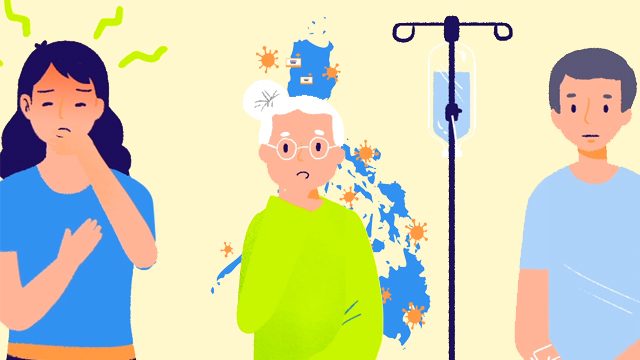SUMMARY
This is AI generated summarization, which may have errors. For context, always refer to the full article.

Animation by Janina Malinis/Rappler
MANILA, Philippines – With a pandemic reaching the Philippines, it goes without saying that the government must conduct tests to find out the extent of the spread of the novel coronavirus.
But not everyone can get tested. While the government develops more labs to conduct testing and acquires more resources, there is a protocol on who can be tested for now. Only patients under investigation (PUIs) with severe symptoms can be tested for coronavirus disease (COVID-19), along with symptomatic elderly, symptomatic healthcare workers, and those with co-morbidities.
The Philippines has been lagging behind other nations when it comes to testing capacities. Numbers as of April 4 show that the Philippines has been testing only 48 PUIs per million people. On March 20, it was only 12 people per million.
South Korea, which was once the country with the most cases of COVID-19 after China, has been able to keep infection levels low though, one reason being, efficient testing. It conducts 6,148 tests per million people. (READ: [ANALYSIS] Beating COVID-19: The hammer and the dance)
The World Health Organization (WHO) called on the world to “test, test, test.” The world cannot fight a pandemic blindfolded, said WHO Director-General Tedros Adhanom Ghebreyesus.
The government said on Thursday, April 2, that it is expected to begin massive testing on April 14.
When should you get tested, and why does the Philippines need massive testing? Watch Rappler’s video explainer to learn more. – Rappler.com
Add a comment
How does this make you feel?
There are no comments yet. Add your comment to start the conversation.